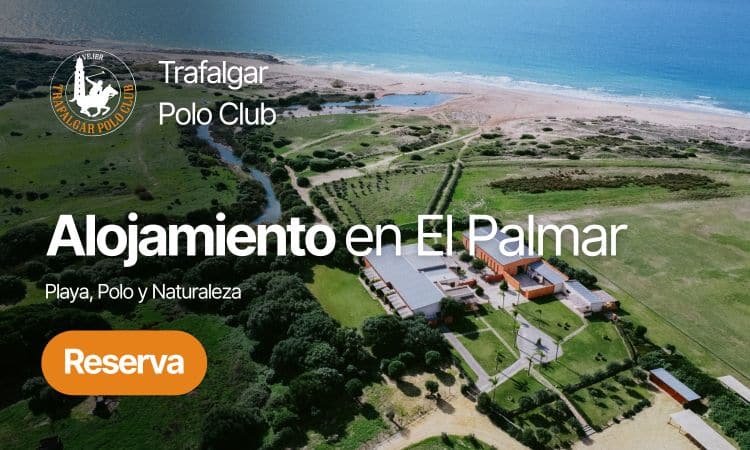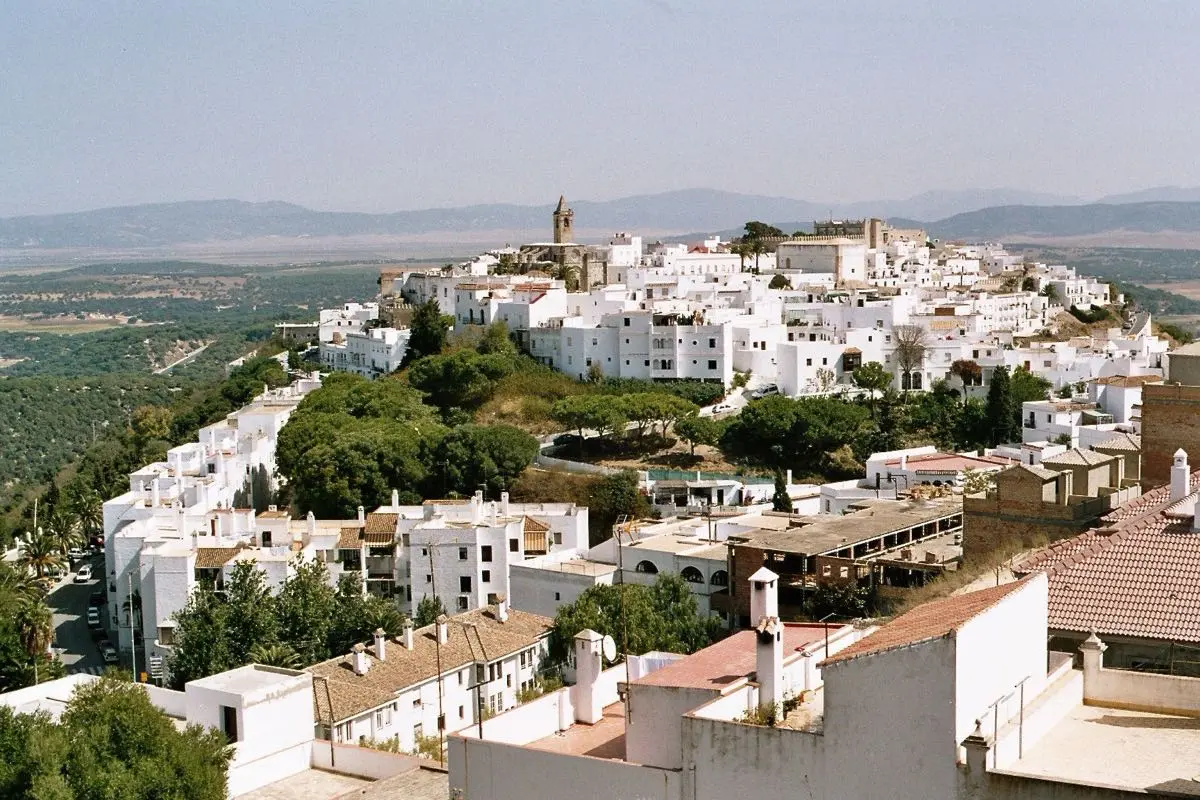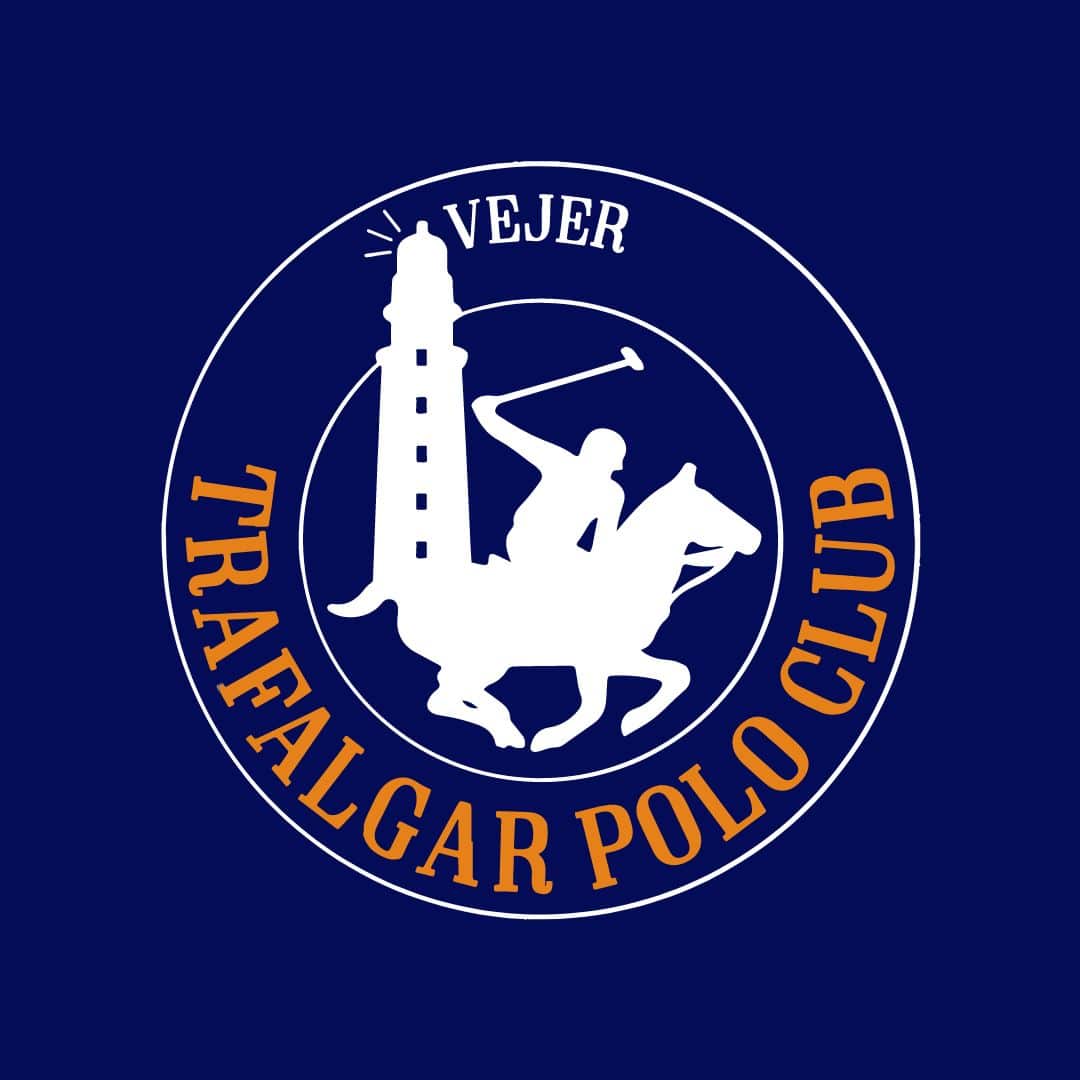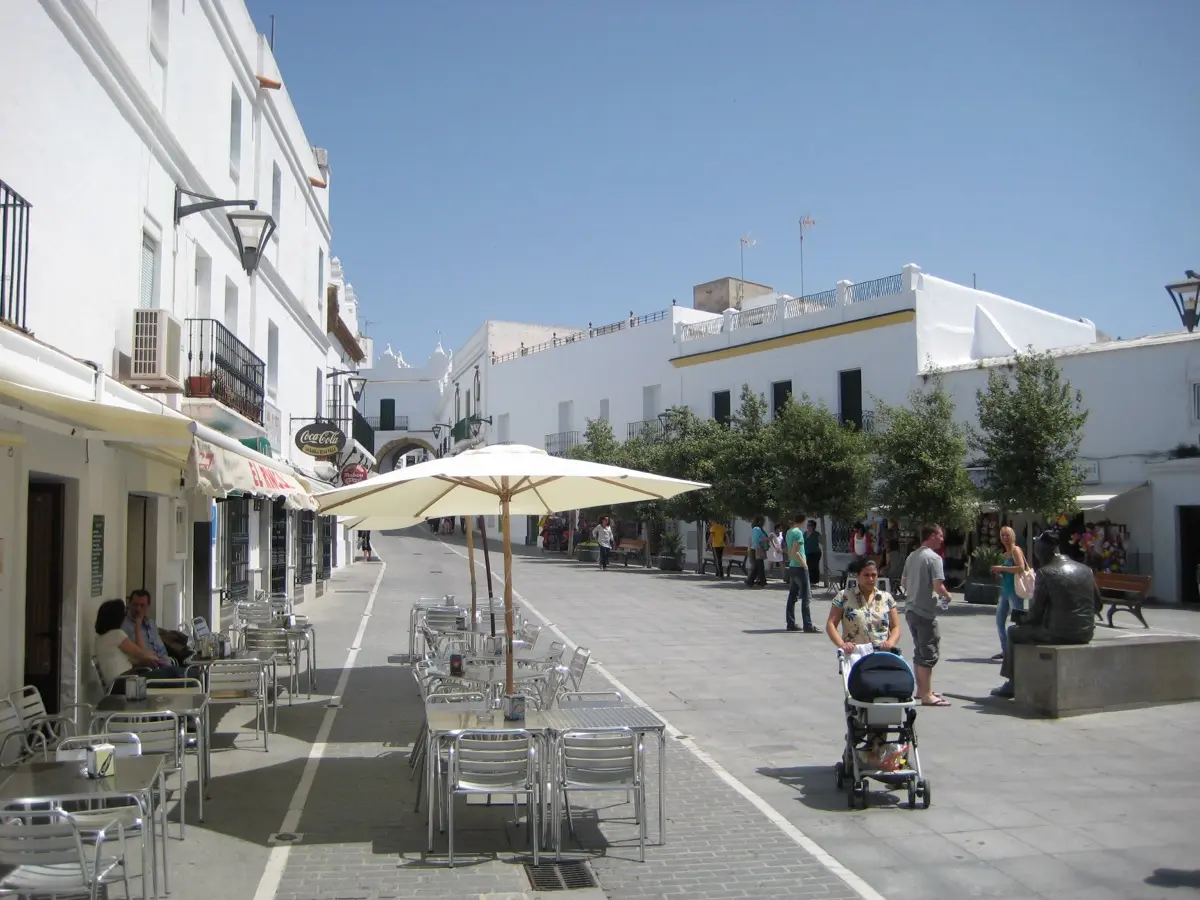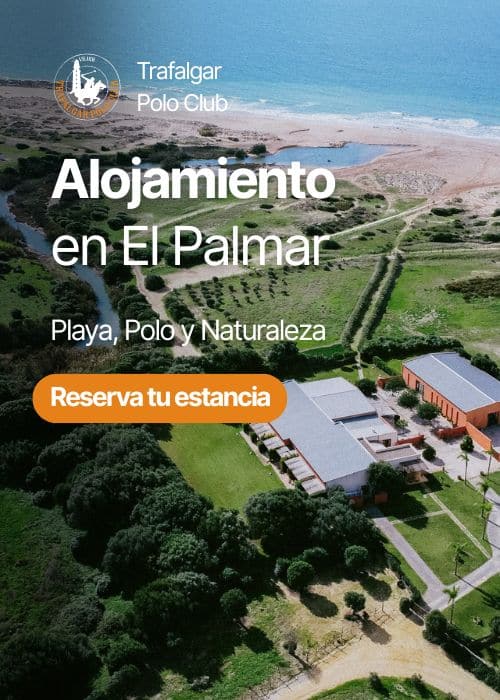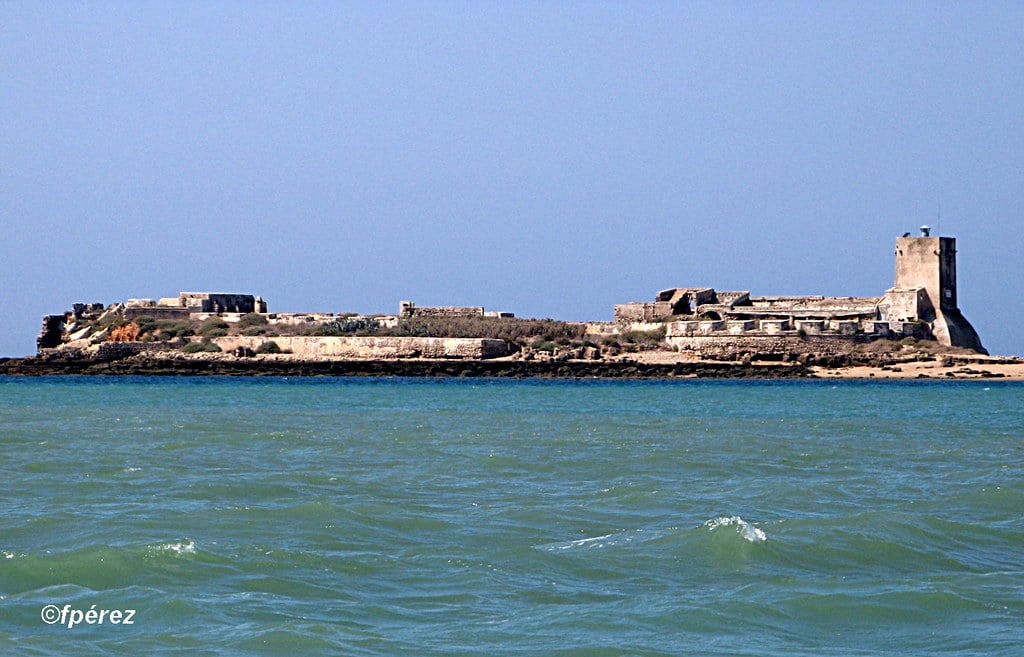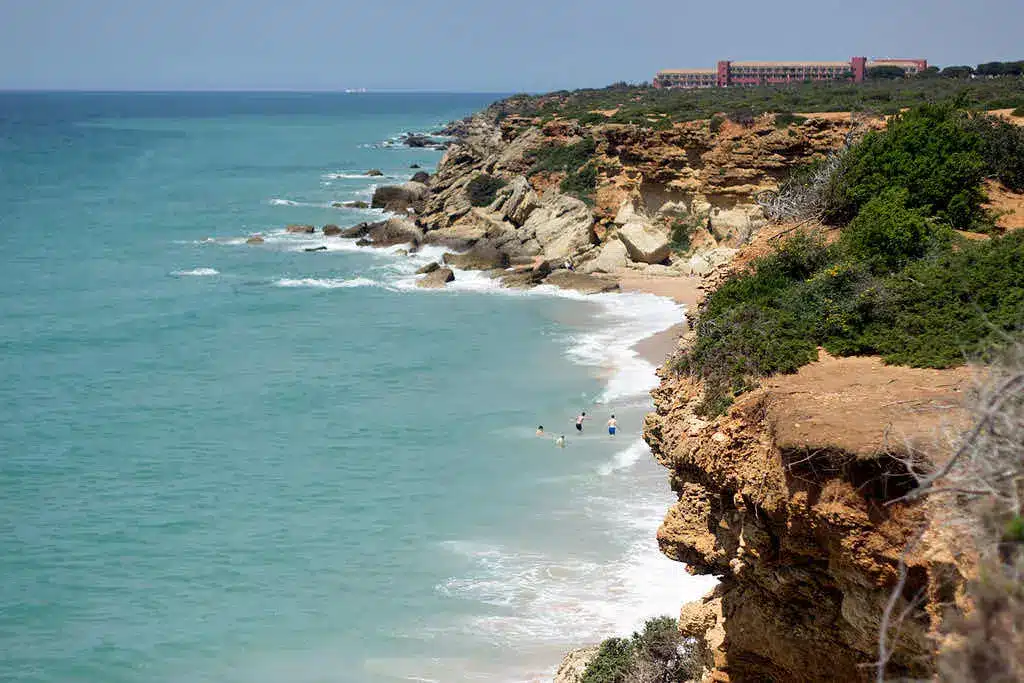The Castle of Vejer de la Frontera is an imposing medieval fortress located in the province of Cádiz. Its rich history, which goes back to the times of the Muslim ruleThe castle is of immense cultural and architectural value. Over the centuries, this castle has been a silent witness to countless historical events and has undergone various transformations. Today, the castle is not only an emblem of the city, but also a symbol of the local identitybut also an outstanding tourist attraction in the heart of the Andalusia.
Historical Context of Vejer Castle
The Castle of Vejer stands majestically like a lighthouse that illuminates the rich history that has shaped this region. Its construction and subsequent evolution are a reflection of the amalgam of cultures and crucial eras that have left an indelible mark on the region. architecture and the heritage local.
Origin and Construction
The origins of Vejer Castle take us back to an era of profound political and social change, marked by the Muslim rule of the Iberian Peninsula. Its construction is estimated to have begun in the 8th centuryThe fortress was conceived not only as a fortress, but also as a fortress to be used as a fortress. The fortress was conceived not only as a bastion of military defencebut also as a clear manifestation of local power. As the fortress took shape, the inhabitants of Vejer turned it into a safe refuge that guaranteed their integrity and autonomy against possible invasions. The strategic location The castle's hilltop location gave it a crucial defensive advantage and privileged visual control over its surroundings.
Muslim Influence in its Architecture
The architecture of Vejer Castle clearly exhibits the distinctive characteristics of the Muslim traditionThe building was built during the period in which it was erected. The horseshoe archeswhich adorn their entrances, are an emblematic aesthetic achievement of Andalusian culture. These structures not only fulfilled a practical function as supporting elements, but also infused the building with a unique aesthetic essence. The materials used, mainly limestone The building techniques are evidence of the advanced understanding of architecture that was consolidated during the Muslim period, masterfully fusing functionality and beauty in a single work of art. The construction techniques are evidence of an advanced understanding of architecture that was consolidated during the Muslim period, masterfully fusing functionality and beauty in a single work. For more information on the architecture of the castle, please consult the Cádiz Provincial Council.
From Muslim Rule to the Christian Kingdoms
The transition from Muslim domination to the Christian kingdoms opened a new and transcendental chapter in the history of Vejer Castle. In the 13th centuryAs the Reconquest progressed, the fortress became a symbol of Christian power in the region. This process of transition not only involved a physical occupation, but also a revaluation of the structure as an emblem of the new era that was dawning for the Iberian Peninsula. Under Christian control, the castle underwent alterations designed to adapt it to new defensive and administrative needs. These modifications included the alteration of some of its original structures and the extension of its walls to reinforce its defensive capacity. The influence of the Christian conquerors was also reflected in the architectural changes, which introduced elements of their own style, creating a contrast with the Muslim forms that had prevailed. Vejer Castle, throughout its long history, has been an eloquent testimony to the socio-political changes in the region, standing as a key point in both the Muslim and Christian history of the region. Spain.
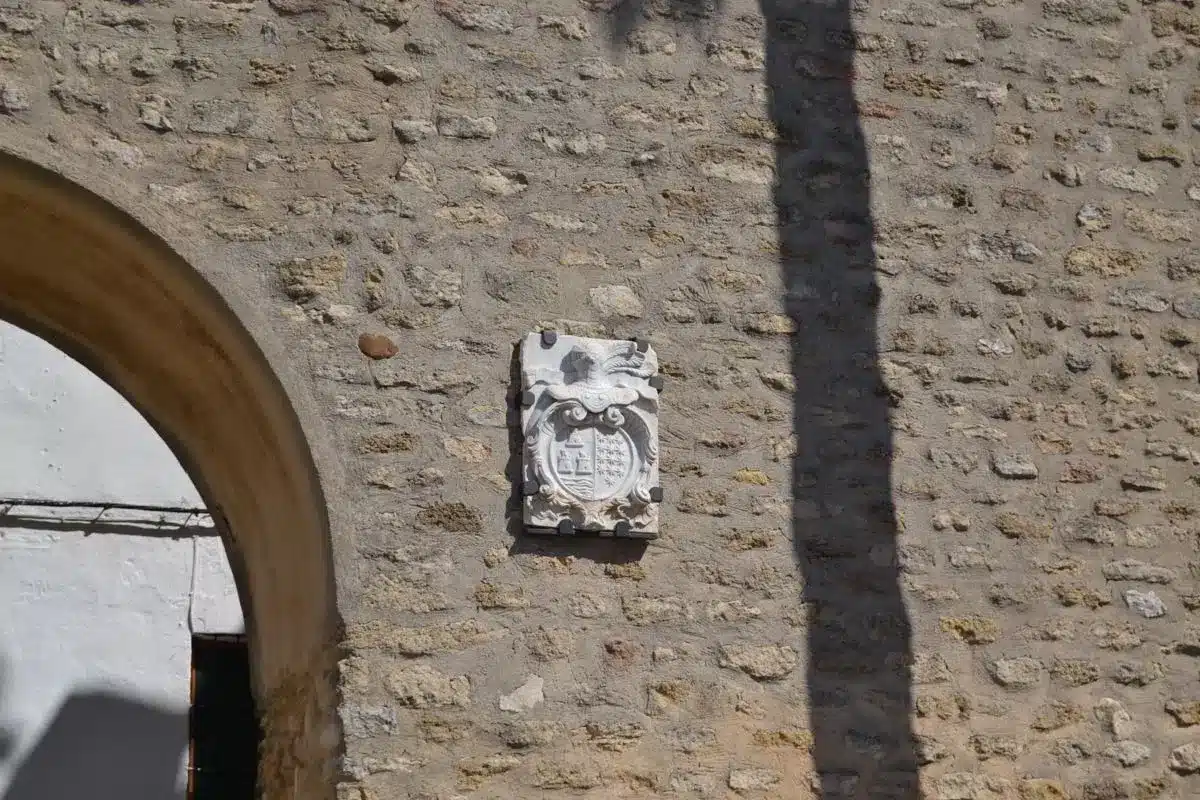
Architecture and Design of the Castle
The fortress presents a fascinating architectural combination which reflects its rich and complex history. Since its beginnings, the castle has integrated different styles, making it a remarkable exponent of the medieval architecture in Andalusia.
Structure and Highlights
The structure of the Vejer Castle is characterised by its imposing walls surrounding the enclosure, showing its primary defensive function. The high towersThe new building, which rises defiantly out of the landscape, offers a strategic perspective that was crucial in times of conflict. Notable elements of its design include:
- Thick wallsThe new, ideal for withstanding the onslaught of attacks.
- Watchtowers which provided a high point for defence and observation.
- Access doors The richly ornamented gateways that mark the entrance to this historic enclosure.
The Horseshoe Arch and its Meaning
A distinguishing feature of the castle is the profuse use of the horseshoe archThe arch is a typical element of Muslim architecture. This type of arch not only has a structural function, but also symbolises the profound cultural influence The fortress was built with the same elegance that the Muslims exercised over the Iberian Peninsula. The elegance inherent in these entrances reinforces the aesthetic importance of the fortress, integrating elements that are still relevant today in contemporary architecture.
Construction Materials Used
The use of local materials was a common and defining practice in the construction of the castle. These materials not only gave strength to the structure, but also reflect the intimate connection with the natural environment in the region.
Use of Limestone
The local limestone was the predominant raw material used in the construction of the castle. This material, known for its resistance and durabilitywas used extensively in the construction of walls and other architectural elements, ensuring the solidity of the fortress over the centuries.
Restorations and Traditional Methods
Over the centuries, a number of different initiatives of restoration have sought to preserve the integrity of the castle. These works have placed special emphasis on the use of traditional techniquesin order to maintain the authenticity of the fortress. The combination of ancestral methods with compatible materials ensures that both the aesthetics and the invaluable history of the site are preserved.
Cultural and Tourist Importance
The relevance of the Castle of Vejer de la Frontera lies in its significant cultural influence and its role as an important tourist attraction of the first order in Andalusia. This medieval fortress not only treasures stories from the past, but is also vibrantly integrated into the life of the municipality today. To find out more about what to do in the area, you can visit the blog of Trafalgar Polo Club on Vejer de la Frontera.
Declaration as a National Monument
The declaration of this castle as a historic-artistic monument at 1931 marked a crucial milestone in its history. This official recognition not only protects its structure and design, but also affirms its heritage importance within the Andalusian and national context. Thanks to this protection, continuous preservation and restoration efforts have been made, ensuring that future generations will be able to appreciate its incalculable cultural value. More details on its protection can be found at CastlesNet.
Local Identity Symbol
The castle has transcended its purely military function and has become a powerful symbol of local identity of Vejer de la Frontera. Its iconic silhouette forms an inseparable part of the landscape that characterises the municipality, representing the history and tradition of its proud inhabitants. During festivities and cultural events, this place becomes a meeting point for the locals, strengthening the sense of belonging and local pride.
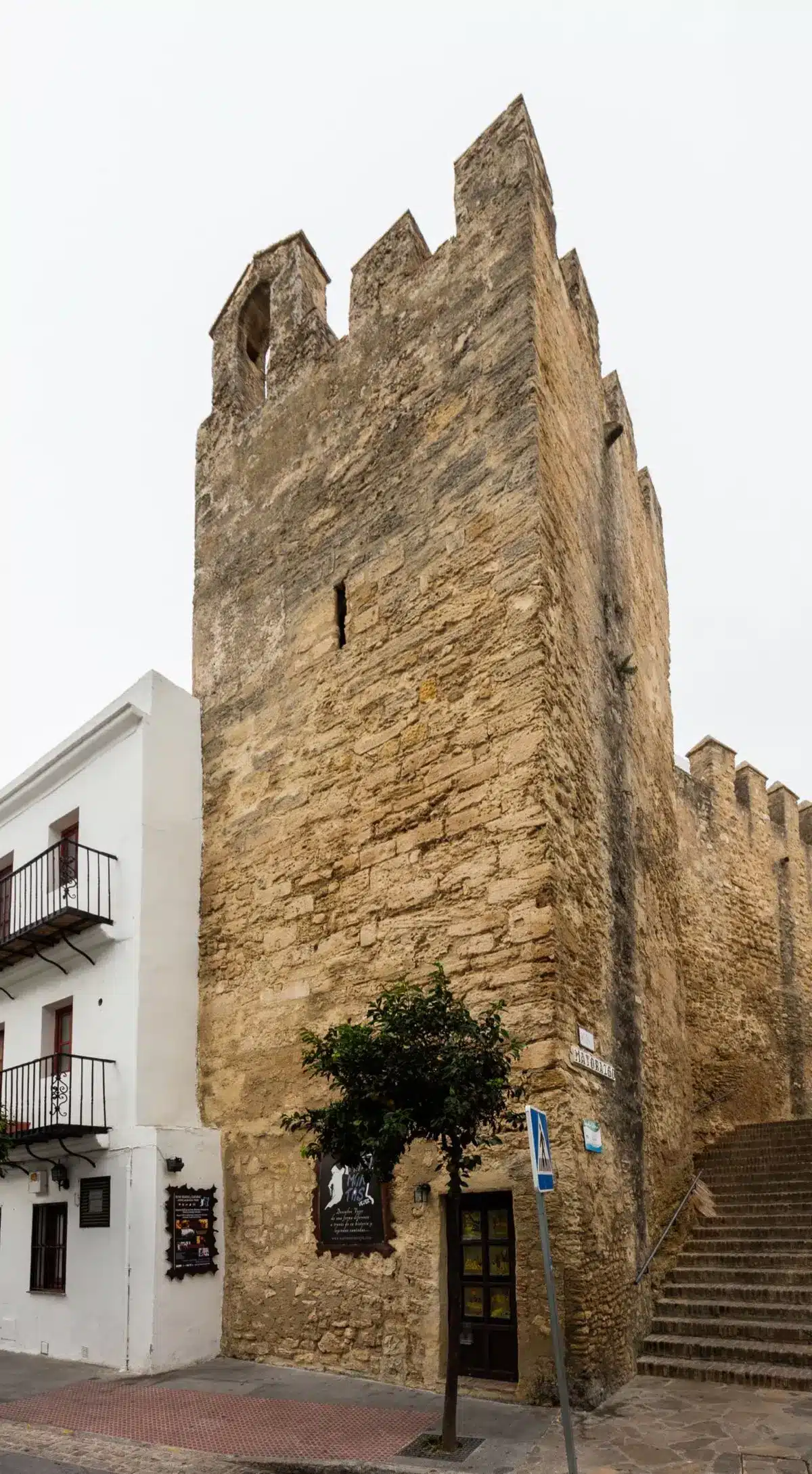
Integration in Andalusian Tourism
As one of the most outstanding destinations in the province of Cádiz, Vejer Castle not only attracts tourists eager for history and architecture, but also contributes directly to the local economy. The fortress is part of a cultural route The wider area includes other monuments and attractions in the region.
Community Involvement
The local community plays an active and fundamental role in the preservation and promotion of the castle. Through associations and cultural groups, events and activities are organised that celebrate its rich history. Workshops, exhibitions and events are held that engage residents, fostering their interest in cultural heritage and promoting historical education. The involvement of local residents has created a welcoming atmosphere for visitors, who feel part of a unique experience when visiting the fortress.
Sustainable Tourism
The focus on sustainable tourism is crucial for the long-term maintenance of Vejer Castle and its valuable surroundings. The implementation of practices that minimise environmental impact is fundamental to preserving not only the fortress, but also the natural heritage of the area. Initiatives such as guided tours in small groups, history workshops and interactive activities allow for a deeper and more conscious appreciation of the local culture. In this way, the Vejer de la Frontera Castle becomes a place where the history, community and tourism are harmoniously intertwined, creating a space that is not only visited, but also lived and felt. This synergy between heritage and community ensures that its legacy endures over time.
Vejer Castle as a Tourist Destination
The fortress is a major tourist attraction in the region of Andalusia, serving as a vital link between the historical past and the vibrant cultural present. Visitors have the unique opportunity to explore its rich heritage while enjoying the incomparable beauty of its surroundings. Consider staying at the flats in Vejer de la Frontera by Trafalgar Polo Club for a complete experience.
Tourist Attractions inside the Castle
Vejer Castle is home to many elements that capture the attention and imagination of tourists. Among its most notable attractions, the following stand out:
- The impressive ramparts offering panoramic views of the surrounding landscape.
- The towers and bastions which are evidence of the sophisticated defensive architecture of the medieval period.
- The inner courtyardThe museum is an evocative meeting place that reflects daily life in times gone by.
- The decorative elements which show the fascinating fusion of architectural styles throughout its history.
Visitor Experience
The site has been carefully designed to provide a enriching experience to those who visit it. Every corner of the castle invites exploration and learning.
Guided Tours and Workshops
The guided tours allow tourists to immerse themselves in the fascinating history of Vejer Castle. Expert guides accompany visitors, sharing stories and anecdotes that illuminate the monument's past. These visits are an ideal opportunity to get to know the structure and its historical context in depth. In addition, we also organise workshops which deal with various aspects of local history and culture. These interactive activities encourage the active participation of visitors, providing a dynamic and enjoyable approach to the visit.
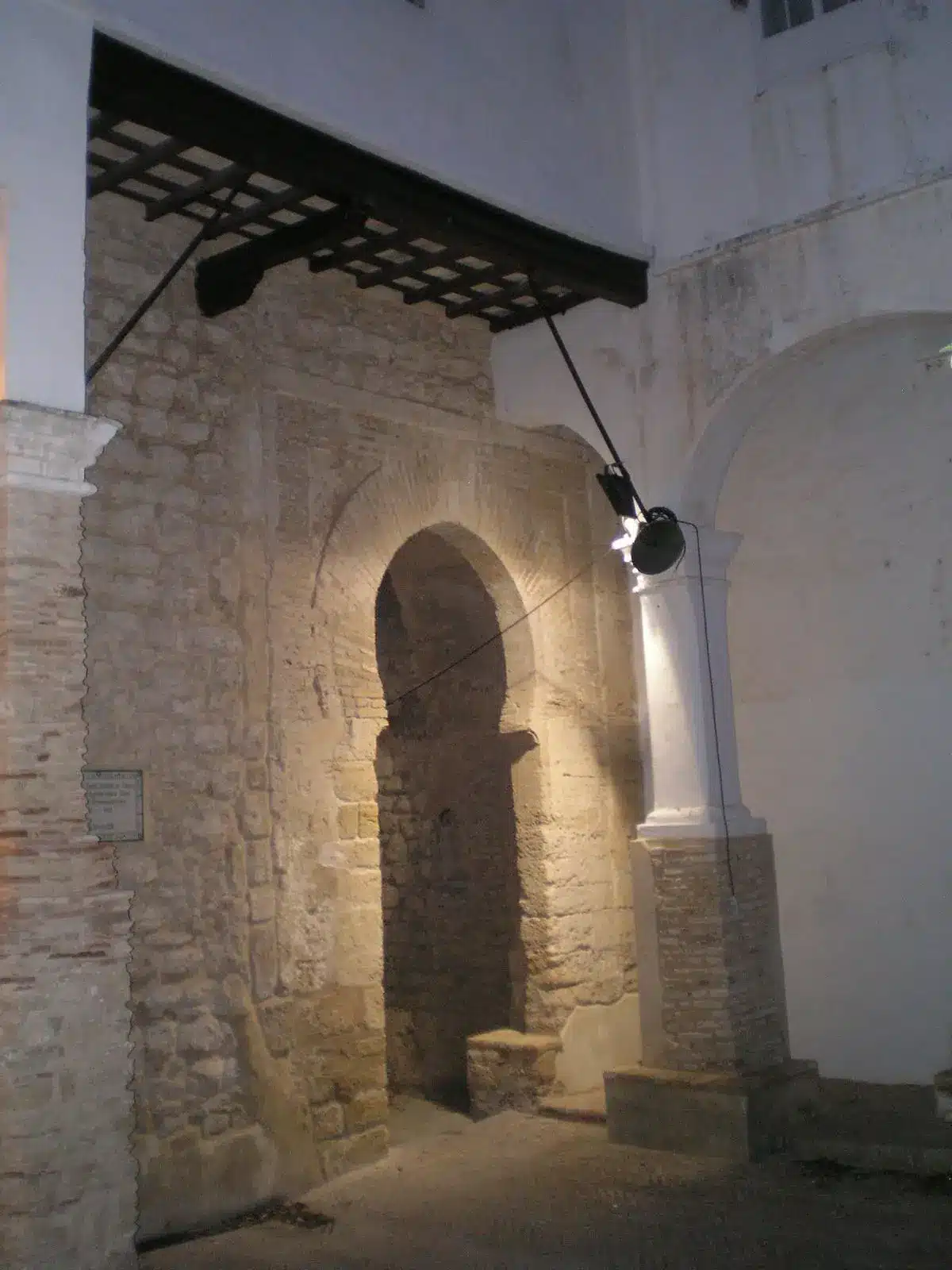
Interactive Activities
Drawing on its immense historical richness, the castle offers interactive activities that capture the interest of youngsters of all ages. These proposals include educational games and practical activities that allow participants to experience medieval life in a fun and didactic way. The combination of all these elements makes Vejer Castle not only a place to visit, but also a place to enjoy and learn about medieval life. unforgettable experiences for all those seeking to connect with the history of Andalusia. Its ability to attract and educate visitors establishes it as an undisputed benchmark within the region's cultural heritage. You can find more ideas for activities in the section of Trafalgar Polo Club activities.
Current Status and Challenges
The fortress has reached the year 2025 in a relatively good condition, thanks to constant conservation and maintenance efforts. However, it faces several challenges which jeopardise its long-term preservation and sustainability as a tourist attraction.
Conservation and Maintenance
The work of conservation are essential to maintain the integrity of this historic building. Initiatives have included:
- Periodic inspections to detect possible structural damage.
- Restorations made using traditional techniques and materials that respect the authenticity of the place.
- Programmes of cleaning to protect the walls and interior structures from erosion caused by the weather. Through collaboration between local authorities and cultural entities, efforts have been made to ensure that the fortress is not only preserved, but also accessible to the public. However, these tasks require careful planning and adequate resources to ensure a sustainable future.
Financial Challenges to Preservation
One of the main obstacles to the preservation of the castle is the availability of funding. Funding is limited, which complicates the possibility of large-scale restoration projects. The financial challenges include:
- The shortage of budget allocated by the local government for the maintenance of historical monuments.
- The need to attract private investment and donations to complement public resources.
- Competition with other tourism projects that may receive more attention and financial support. The sustainability of the castle as a tourist attraction depends to a large extent on solving these financial problems. Funding alternatives are being evaluated, such as the development of sponsorship programmes and partnerships with private entities.
Future Opportunities for the Castle
Despite the challenges, there are a number of opportunities that strengthen the castle's cultural and touristic relevance. The possibilities include:
- The development of guided tours and interactive activities to enrich the visitor experience.
- The creation of cultural events that involve the community and attract tourists of different profiles, such as the Week of the Patios of Vejer.
- The promotion of sustainable tourism, highlighting the importance of conservation in the tourist experience. By taking advantage of these opportunities, interest in Vejer Castle can be increased, which in turn could translate into a greater flow of visitors and thus additional funding for its conservation.
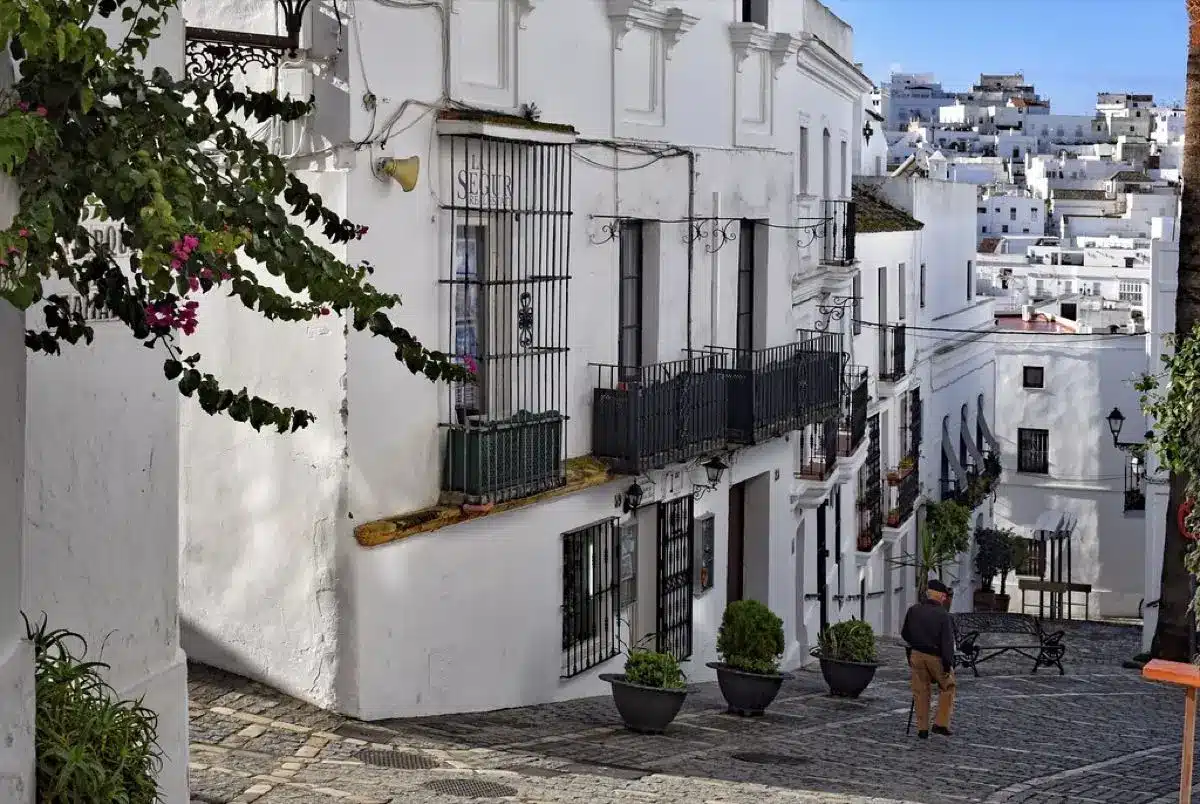
Other Elements of Interest
Vejer Castle hides various elements that enrich its history and add a special touch to the significant cultural value. These details not only highlight the architecture of the castle, but also reflect the local identity and traditions that have endured over the centuries.
Patio de Armas and its Relevance
The Courtyard of Weapons constitutes the heart of the castle, providing a large and strategic space that in times past served as a place of assembly and defence. This space not only has a functional value, but is also a testimony to the social and military life that took place in the fortress. In the courtyard, the soldiers prepared for defence, and the nobles met to discuss the affairs of the kingdom. Nowadays, the courtyard is a place where cultural events are held, making it a meeting point between Vejer's past and present.
The Mayorazgo Tower
One of the most outstanding features of the castle is the Mayorazgo Towerwhich rises majestically above the surrounding landscape. This architectural element not only fulfils a defensive function, but also symbolises the power and authority of the local nobility. The tower, with its robust and stylised design, offers panoramic views that allow visitors to appreciate the natural beauty of the area. The history of the Torre del Mayorazgo is intertwined with that of Vejer, having witnessed numerous crucial episodes in its development as a town. Additional information about the towers and walls can be found in specialised blogs such as My Castles.
Sancho's Arch and Other Details
The Arch of Sancho represents one of the most emblematic elements of the castle, offering an imposing entrance that reflects the Muslim influence on local architecture. Its design in horseshoe arch is a clear example of the style that characterises the period of Muslim domination. This arch not only has an aesthetic function, but also carries a deep symbolism, representing the connection between the different cultures that coexisted in Vejer. Other architectural details, such as the Arabic inscriptions and reliefs, add further value to the ensemble, reminding visitors of the rich multicultural heritage that defines the castle.
Aspects related to Vejer de la Frontera
The cultural richness of Vejer de la Frontera is reflected in its customs, traditions and the interaction of its community with the local historical heritage. This provides a unique context to better understand the influence of the environment on the history and daily life of its inhabitants.
Local Customs and Traditions
Vejer de la Frontera stands out for its vivas customs that have endured over the years. These traditions are a reflection of the fusion of different cultures, especially Muslim and Christian. The festivals and celebrations that take place in the town are key moments where these customs are manifested, such as:
- The Virgen de la Oliva FestivitiesThe festival is celebrated in September and attracts locals and visitors alike.
- EasterWith processions that fill the streets with solemnity and fervour, it is a time when the community shows its deep-rooted religious tradition.
- The May CrossesDuring this time, the streets are decorated with flowers and cultural and social activities are held.
The Parish Church of the Divine Saviour
The Parish Church of the Divine Saviour stands in the heart of Vejer, symbolising not only the faith of its people, but also the history of the municipality. This building, built in the Gothic and Renaissanceis a tourist attraction in itself. Its interior houses impressive altarpieces and objects of religious art. The church also serves as a meeting point for the community, strengthening ties between neighbours through celebrations and activities. Masses and religious festivities, such as the Candelaria celebration, are moments of great relevance for the vejeriegos.
Interaction between the Castle and the Municipality
The connection between the castle and the municipality of Vejer goes beyond the physical. It represents a historical link that unifies the experiences of the population over time. The fortress has served as a bastion that guards the stories of those who inhabited the town. The atmosphere surrounding the castle is enriched by the cultural and social life of Vejer, where events are organised to encourage interest in local history. Activities such as fairs and art exhibitions nearby allow visitors and locals alike to enjoy a vibrant cultural exchange. Festivals such as the Early Music Festival are held at the castle, taking advantage of its magical atmosphere, reinforcing the site's role as a cultural epicentre.
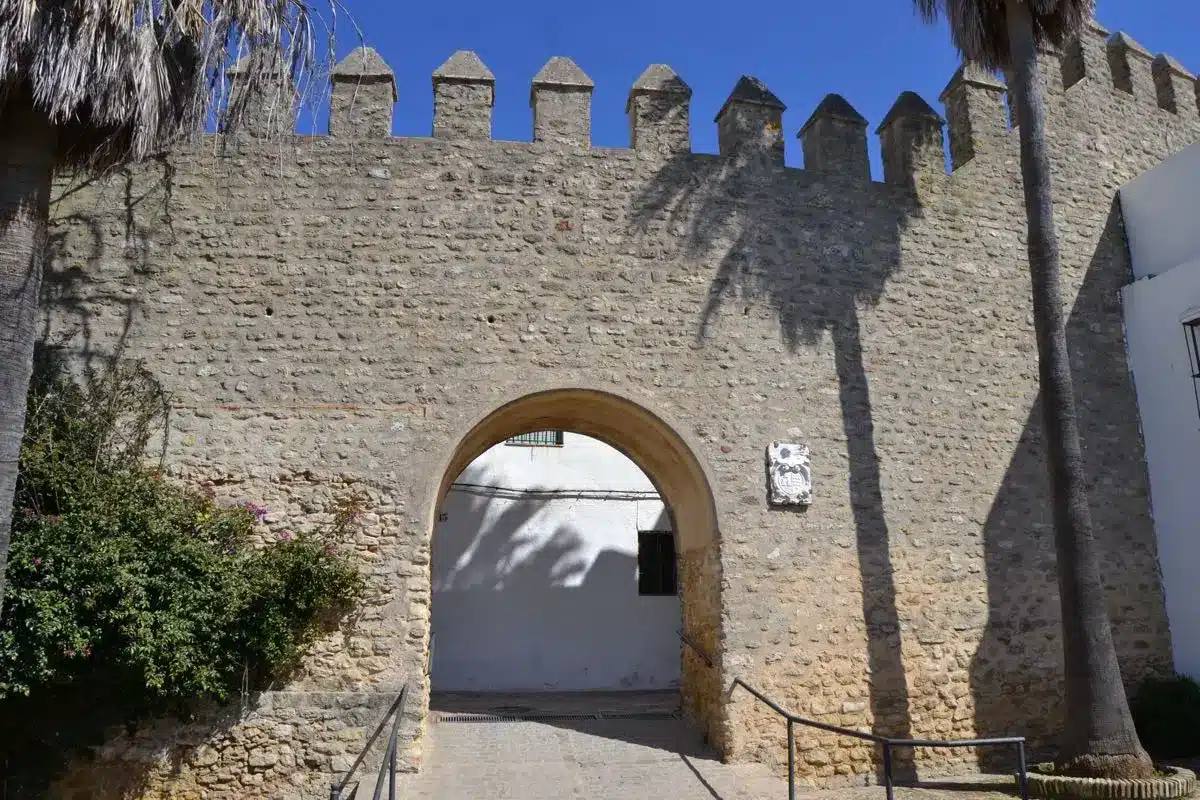
Photography and Visual Documentation
The photography and visual documentation play an essential role in the preservation and dissemination of the history and heritage of the place. Through images, the essence of Vejer de la Frontera Castle can be captured, as well as its structure and cultural significance.
Photos of the Castle of Vejer de la Frontera
The images of Vejer Castle are a window onto its monumentality and beauty. These photographs not only show the fortress at different times of the day, but also highlight various angles that enhance its impressive architecture. Visitors on social media, professional photographers and tourists have contributed to the dissemination of its image, creating a vast visual archive. Among the most outstanding photos can be found:
- Aerial views showing the majesty of the castle and its natural surroundings.
- Night photography that reveal the illumination of the castle, offering a magical perspective.
- Images that capture people's interaction with the castle and its walls, emphasising its significance as a cultural meeting point. For inspiration, take a look at the family activities at Toads and Princesses.
Conclusion
Vejer Castle is not only an architectural jewel perched high above the province of Cádiz; it is a living symbol of Andalusian history and a testimony to the coexistence of cultures that have shaped the identity of Vejer de la Frontera.
From its Muslim origins to its consolidation as a Christian bastion, every stone tells a story. Today, this monument not only attracts those who seek to immerse themselves in the past, but also those who value heritage as an engine of sustainable and cultural development. To visit Vejer Castle is to rediscover the history of Andalusia in its purest and most monumental form.
